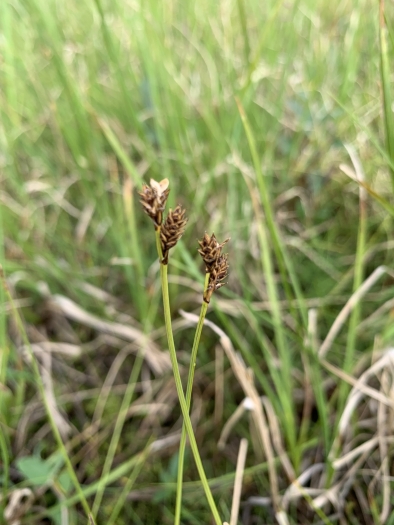False Helleborine
(Carex heleonastes)
False Helleborine (Carex heleonastes)
/
/

© Valerii Glazunov
CC BY 4.0
Image By:
© Valerii Glazunov
Recorded By:
Copyright:
CC BY 4.0
Copyright Notice:
Photo by: © Valerii Glazunov | License Type: CC BY 4.0 | License URL: http://creativecommons.org/licenses/by/4.0/ | Uploader: vaglazunov | Publisher: iNaturalist |







Estimated Native Range
Summary
Carex heleonastes, commonly known as False Helleborine, is a perennial herbaceous plant native to Europe across Siberia to the Russian Far East. It is particularly adapted to cold climates and can be found in arctic and subarctic regions. This sedge typically forms dense clumps and reaches heights of 10-60 cm. Carex heleonastes has narrow, grass-like leaves and produces small, inconspicuous brownish flowers in the summer, which are arranged in spikes and are not particularly showy. Despite its modest flowers, it is valued for its ability to thrive in wet conditions and its fine-textured foliage that adds a delicate appearance to plantings.
False Helleborine is appreciated for its low maintenance requirements and its utility in naturalistic plantings, especially in wetland restoration and as a component of rain gardens. It is also used to stabilize soil in riparian zones. In cultivation, it prefers consistently moist to wet soils and can tolerate a range of light conditions from full sun to partial shade. While generally disease-free, it can suffer from root rot if planted in poorly drained soils. It is not known for being invasive outside its native range, but gardeners should always monitor and manage their plantings to prevent any potential spread.CC BY-SA 4.0
False Helleborine is appreciated for its low maintenance requirements and its utility in naturalistic plantings, especially in wetland restoration and as a component of rain gardens. It is also used to stabilize soil in riparian zones. In cultivation, it prefers consistently moist to wet soils and can tolerate a range of light conditions from full sun to partial shade. While generally disease-free, it can suffer from root rot if planted in poorly drained soils. It is not known for being invasive outside its native range, but gardeners should always monitor and manage their plantings to prevent any potential spread.CC BY-SA 4.0
Plant Description
- Plant Type: Grass
- Height: 1-3 feet
- Width: 1-1 feet
- Growth Rate: Moderate
- Flower Color: N/A
- Flowering Season: Summer
- Leaf Retention: Evergreen
Growth Requirements
- Sun: Full Sun, Part Shade
- Water: High
- Drainage: Slow, Standing
Common Uses
Erosion Control, Low Maintenance, Water Garden
Natural Habitat
native to Europe across Siberia to the Russian Far East
Other Names
Common Names: Fensedge
Scientific Names: Carex heleonastes , Carex carltonia , Carex heleonastes , Carex leporina , Vignea heleonastes
GBIF Accepted Name: